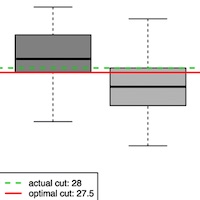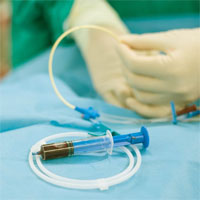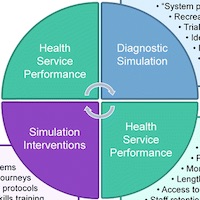Stories Category: Intensive Care

An evaluation of the Swiss staging model for hypothermia using hospital cases and case reports from the literature
The Swiss staging model for hypothermia uses clinical indicators to stage hypothermia and guide the management of hypothermic patients. The proposed temperature range for clinical stage 1 is ... read more

Reversal of Oral Anticoagulation in Patients with Acute Intracerebral Hemorrhage
In light of an aging population with increased cardiovascular comorbidity, the use of oral anticoagulation (OAC) is steadily expanding. A variety of pharmacological alternatives to vitamin K antagonists (VKA) have emerged... read more

Approaches to Addressing PICS Among ICU Survivors
Critical illness can be lethal and devastating to survivors. Improvements in acute care have increased the number of intensive care unit (ICU) survivors. These survivors confront a range of new or worsened health states that... read more

The Epidemiology of Symptomatic Catheter-associated Urinary Tract Infections in the ICU
Catheter-associated urinary tract infection (CAUTI) occurs frequently in critical illness with significant morbidity, mortality, and additional hospital costs. The epidemiology of symptomatic ward-acquired CAUTI (within 48... read more

Disease History to Predict Mortality Risk in ICU Patients
Patients in the intensive care unit are highly heterogeneous, and include elderly patients who generally have a long history of disease. Prediction of prognosis can often be difficult because of the severity of patient illness... read more

Diaphragm-protective Mechanical Ventilation
Diaphragm dysfunction is common in mechanically ventilated patients and predisposes them to prolonged ventilator dependence and poor clinical outcomes. Mechanical ventilation is a major cause of diaphragm dysfunction in these... read more

Alternatives to Rapid Sequence Intubation: Contemporary Airway Management with Ketamine
Endotracheal intubation (ETI) is a high-risk procedure commonly performed in emergency medicine, critical care, and the prehospital setting. Traditional rapid sequence intubation (RSI), the simultaneous administration of... read more

Translational Simulation: Not “Where?” But “Why?” A Functional View of In SITU Simulation
Healthcare simulation has been widely adopted for health professional education at all stages of training and practice and across cognitive, procedural, communication and teamwork domains. Recent enthusiasm for in situ simulation—delivered... read more

Impact of Mean Arterial Pressure Fluctuation on Mortality in Critically Ill Patients
The purpose of this study was to investigate the association between mean arterial pressure fluctuations and mortality in critically ill patients admitted to the ICU. The reduced mean arterial pressure fluctuation (within... read more

Environment key battle ground in fight to tackle antibiotic resistance
The environment could be as important a battle ground as the clinic in the global fight against the spread of antibiotic resistance, new research has shown. A study conducted at the University of Exeter Medical School concluded... read more

Cost-effectiveness analysis of initial treatment strategies for mild-to-moderate Clostridium difficile infection in hospitalized patients
A decision-analytic model revealed vancomycin to be cost-effective, compared with metronidazole, for treatment of initial episodes of mild-to-moderate Clostridium difficile infection (CDI) in adult inpatients. From the hospital... read more

Organizational Factors Associated with Target Sedation on the First 48 hours of Mechanical Ventilation
Although light sedation levels are associated with several beneficial outcomes for critically ill patients on mechanical ventilation, the majority of patients are still deeply sedated. Organizational factors may play a role... read more

Outcomes and Costs of Patients Admitted to the ICU Due to Spontaneous Intracranial Hemorrhage
Spontaneous intracranial hemorrhage, including subarachnoid hemorrhage and intracerebral hemorrhage, is associated with significant morbidity and mortality. Although many of these patients will require ICU admission, little... read more

Fluid Responsiveness in Sepsis
Fluid challenge is a common practice in the ICU. It is one of the most important resuscitation manoeuvres of acute circulatory failure management in critically ill patients. Adequate fluid resuscitation is very important... read more








